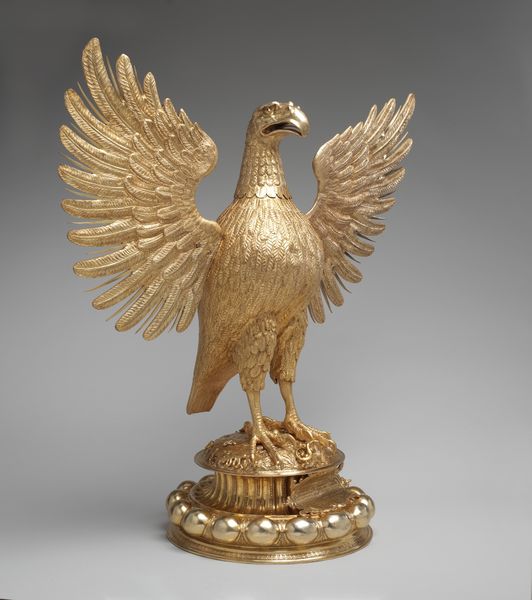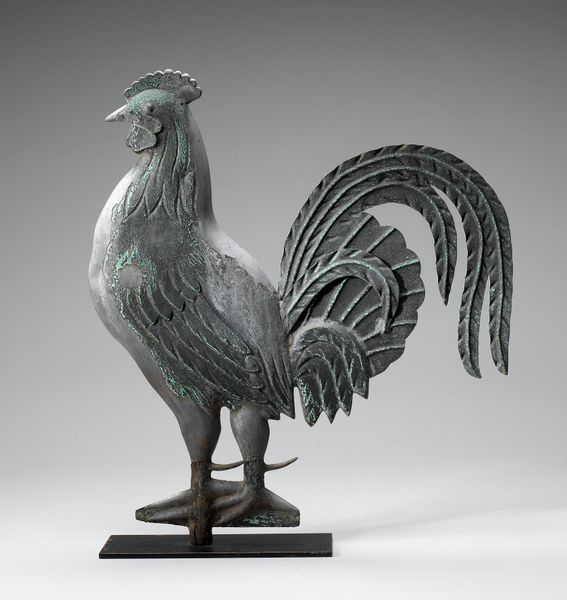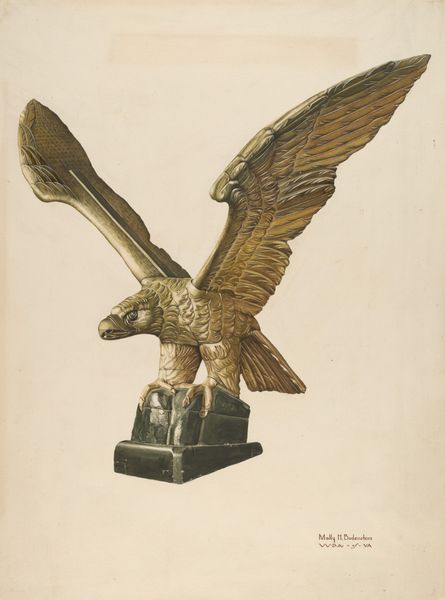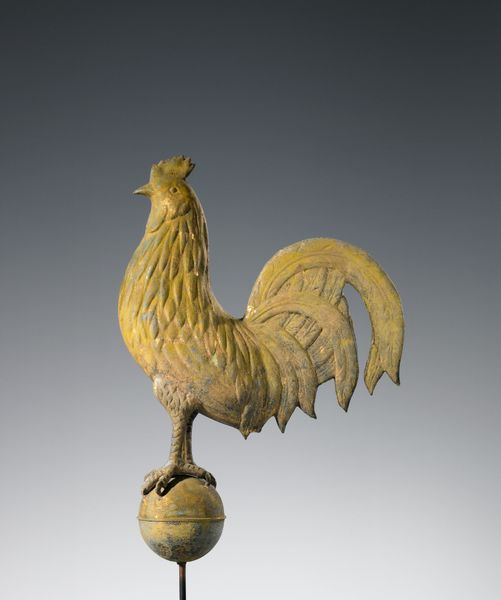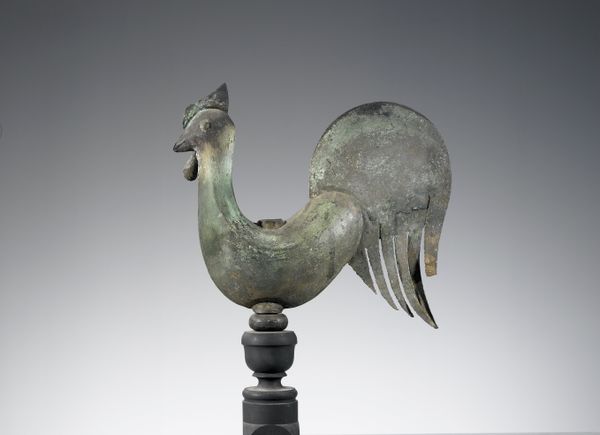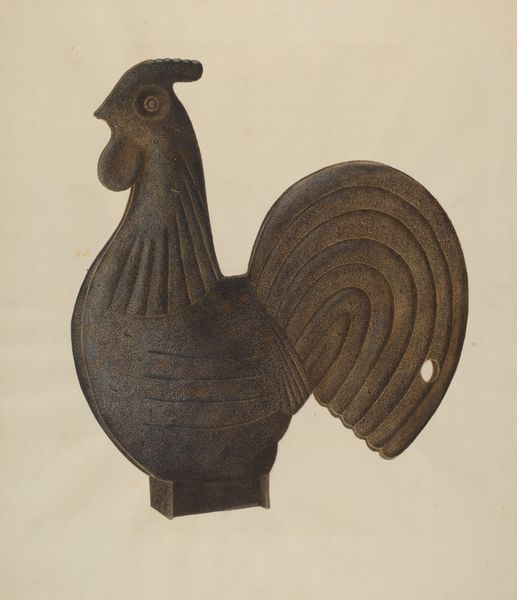
Lectern for the Reading of the Gospels with the Eagle of Saint John the Evangelist 1301
0:00
0:00
carving, sculpture, marble
#
medieval
#
carving
#
figuration
#
sculpture
#
marble
#
medieval-art
Dimensions: Overall: 27 3/4 x 24 3/16 x 16in. (70.5 x 61.5 x 40.6cm)
Copyright: Public Domain
Editor: We're looking at the "Lectern for the Reading of the Gospels with the Eagle of Saint John the Evangelist" by Giovanni Pisano, from around 1301. It's a marble carving, and the detail is impressive. What immediately strikes me is how tactile it looks – you can almost feel the weight of the stone and the texture of the feathers. What’s your take on this piece? Curator: Well, looking at this marble sculpture, it's crucial to consider not just its symbolic value within a religious context, but the very labor and material conditions that gave rise to its creation. Marble was a precious commodity, demanding skilled artisans, and complex logistics for quarrying and transportation. Pisano's choice to represent the eagle, associated with Saint John, speaks to power, both divine and earthly, but consider the expense of creating it. How does the carving technique itself convey a message about production in the 14th century? Editor: That’s interesting! I hadn’t really considered the physical effort that went into creating something like this, or marble as a symbol of something itself. Curator: Exactly! Now, examine the detail, each feather carefully shaped. It’s a testament to the carver's skill. We have to think of this lectern as both a devotional object and a product of considerable human toil and investment. It bridges high religious art and artisanal craft, defying strict categorization. What do you think the scale tells us? Editor: I suppose it tells us something about how many people had access to it. It was intended for public display, meaning many hands were part of creating and shaping the work and also shaping the public around it. Considering how precious marble was, did its existence challenge assumptions about how resources were handled in the medieval age? Curator: Precisely! The resources were invested to create a statement and an experience; its production underscores the intertwined roles of labor, devotion, and consumption. It invites us to question the divide between art, craft, and economy in the Medieval age. Editor: Thanks, that gives me a whole new way to consider medieval art! I will always look for this angle to understand artwork more fully.
Comments
No comments
Be the first to comment and join the conversation on the ultimate creative platform.
